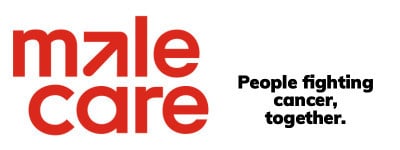RESEARCHERS have harnessed a drug based on chlorophyll, the pigment that reacts with sunlight to produce energy in plants and make them green, to develop a treatment for prostate cancer.
The scientists injected the drug into patients and then “activated” it using tiny lasers inserted into the prostate gland. The chemically modified chlorophyll attacked and blocked the blood vessels that fed the tumours, killing the cancerous cells within days.
The technique remains experimental but trials at University College London (UCL) and in Canada suggest it has strong potential. “This is one of the most promising treatments for prostate cancer I’ve seen,” said John Trachtenberg, director of the prostate centre at Princess Margaret hospital in Toronto, who is overseeing the trials.
Prostate tumours are among the most common and deadliest of cancers in men with 30,000 new diagnoses and 10,000 deaths a year in Britain alone.
Sufferers of the disease have included Lord Runcie, the late Archbishop of Canterbury, Nelson Mandela and Bob Monkhouse, the late comedian.
The cancer can be cured if caught early but it is difficult to discriminate between cancerous and normal tissue using conventional therapies such as surgery or radiotherapy. Patients are often left incontinent and impotent because the nerves controlling urination and sexual function pass through the prostate and are destroyed along with the cancerous tissue.
The new research was prompted by these drawbacks. The technique was devised by Avigdor Scherz, in collaboration with Yoram Salomon from the department of Biological regulation. Professor Scherz is a plant biochemist based at the Weizmann Institute of Science in Israel. One of his family was stricken by cancer.
He knew that when chlorophyll was struck by light it could be induced to release a surge of “free radicals” — highly reactive molecules capable of destroying nearby cells. He reasoned that, in the darkness of the human body, a drug based on chlorophyll would remain inert unless hit by light.
“By illuminating a tumour with intense light we could activate the drug only around the cancerous cells, leaving the rest of the body unaffected,” he said.Scherz tested different chlorophyll molecules from plants and micro-organisms, finding that the best came from a bacterium that lives in sea-water.
He named the drug Tookad, Hebrew for “warmth of light”, and went into partnership with Steba Beheer NV, a Dutch firm that is sponsoring clinical trials.
Last autumn Trachtenberg enlisted 30 patients who had suffered a recurrence of prostate cancer despite being treated with radiotherapy.
In the treatment, his team inserted up to five needles into each patient’s prostate, feeding tiny fibre-optic cables through the needles. The cables were sited to illuminate the diseased prostate without affecting adjacent organs.
The patients were infused with Tookad and, as it began circulating through the body, their prostates were flooded with laser light. As the trials went on, the level of light and the number of needles were raised.
“The last 12 patients got the maximum number of needles and the highest light dose. Of those 12, a six-month biopsy has shown the cancer has gone,” said Trachtenberg. Most of the other patients also showed some benefit.
If confirmed, such results would be a significant success.
In London, the trials of Tookad are less advanced but have shown promise. Six patients have been treated using just two fibre-optic cables and 24 more cases are planned. In three cases the cancerous prostate gland has receded. The biggest hope is, however, that those treated will retain sexual function and bladder control.
Caroline Moore, a surgeon and UCL researcher who is overseeing the trial, said: “If surgery or radiotherapy fail, you often cannot do it a second time, but this approach can be repeated. It is also much less intrusive and could even be done as daycare.”
